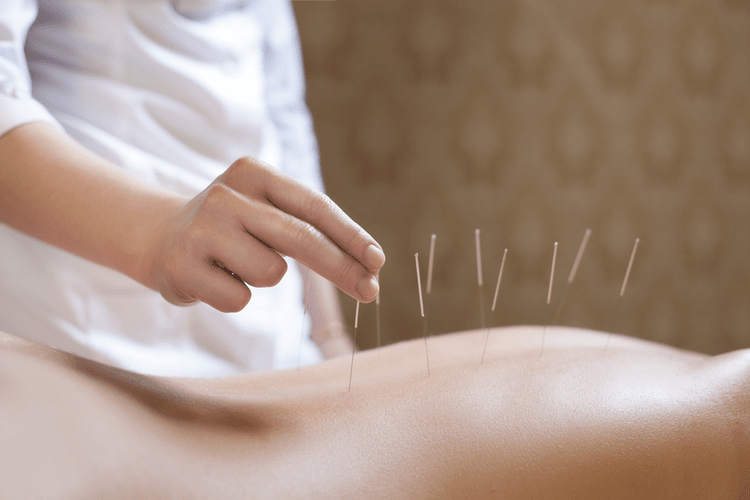Contents
While it has been very important in helping health care professionals, addicts and the friends and family of those struggling better understand the phases of alcohol addiction, it’s not a perfect model. E. M. Jellinek, the creator of the Jellinek Curve, was one of the earliest pioneers of the disease model of addiction. His research and the creation of the Jellinek Curve helped to change the way addiction and recovery was understood. While Jellinek outlined the progression of the disease of addiction, Dr. Max M. Glatt revised the curve to include a phase that detailed recovery and rehabilitation. Because of this, the Jellinek Curve is made up of two, curving halves.


This makes aftercare services, group therapy, and mutual support groups essential for the rehab process. People go through a cycle of drinking because they’re now physically dependent on alcohol. The Jellinek Curve is initially made for alcohol addiction. But it has also been adapted for drug use and other addictions like porn and gambling. Glatt revised Jellinek’s chart to include this upswing of recovery.
Could nihilistic and dark imaginings be vague spiritual desire? For one who’s theistic, how about doubting the grace of Yahweh? Maybe hearing or sensing things and attributing hallucinations to something cosmic? It’s more fun than to think about than sitting in unexpected traffic. My perceptions today are that all religiosity is rooted in emotionalism and even more so the so-called non-religious. We can’t help being emotional beings no matter how hard we try not to be.
Mutual Support Groups
And this is integral, as it is this understanding which will allow us to make full use of the Jellinek Curve in our recovery. He noted that many patients not only had stories which fit Jellinek’s trajectory of alcoholic decline but that their stories of recovery displayed numerous similarities as well. Taking this into account, Glatt developed the Jellinek Curve by modifying Jellinek’s original research to include a rehabilitation stage. On the flipside, we will also feel greater remorse for our actions. We may try to control our substance abuse, but we will often fail. We will make promises to others and to ourselves, and we may even trya geographical cure, but these efforts will be futile.
The purpose of the Jellinek Curve is to show that alcoholism or drug addiction is a progressive disease that can worsen over time if the proper treatments aren’t received. It also shows how a healthier and more fulfilling recovery from addiction is possible. Though originally created to detail the stages of alcohol addiction and recovery, the Jellinek Curve has been adapted to represent all other forms of addiction. By understanding how addiction develops and recovery begins, a person can have a better understanding of the steps they need to take to find treatment, maintain their recovery, and prevent relapse. The four phases of the Jellinek curve only represent the first half of the addiction and recovery journey.
According to the Jellinek Curve, when a person is chronically drinking or using drugs, levels of use have reached compulsive levels. Here, a person will typically experience a major loss of control over their behaviors. In this state, a person will likely be unable to stop or reduce their use, despite multiple attempts trying to.
During this time, we will learn to treat addiction as afamily disease. We will adjust to our family’s needs and develop a new circle of stable friends as we develop new interests and experience a rebirth of one’s ideals. Both family and friends will generally appreciate our efforts in recovery. We will learn to take our personal inventory and examine our spiritual needs as we learn to refocus our thinking in a positive way. We will be met with new hope, and we will be given a physical overhaul as we receive proper treatment and start group therapy.
Mapping Out Your Own Course Through Recovery
Trazodone hydrochloride (known as “trazodone”) is an FDA-approved antidepressant and sleeping pill developed in the 60s. It was initially not favored by the medical community because it had side effects such as dizziness, fainting, irregular heartbeat, and priapism… Depending upon the specific requirements set before us by our sponsor or our treatment program, we will be required to inventory our resentments, our fears, and often the harm we have done to others. During theEighth Step, we must certainly recall the harm we have done to others so that we may move on toStep Nineand begin making amends.
This is part of our ongoing commitment to ensure FHE Health is trusted as a leader in mental health and addiction care. It also gives us valuable insight into the chronic phase of addiction, in which addicts want to get help but are unable to get out of the cycle. Many people don’t understand why wanting to get help isn’t enough and that it may take several times before an addict can truly step out of that spin cycle and head into recovery. Not everyone will experience each phase precisely as described.
While Jellinek’s research into the trajectory of alcoholism was monumental in its time, Glatt’s research into the trajectory of rehabilitation maintains equal importance today. To understand our addiction would be a fruitless aim if there were no understanding of recovery to follow. In this study, Jellinek looked at the answers to a survey published in the AA magazineGrapevineand determined that alcoholism might actually evolve over the course of a lengthy trajectory. At this point, the phases were still rudimentary, evolving from basic relief drinking to occasional benders and ending with the lowest point of addiction. The above summation of the Jellinek Curve indicates that no small amount of effort went into cataloging the many stages of addiction and recovery. In order to better our understanding of the Jellinek Curve and how it came to be, we may take a look at the work of Elvin Morton “Bunky” Jellinek, the man responsible for the curve.
These medications can help you stop drinking and protect against relapses. People may also drink by themselves more often during this stage. Each stage has notable symptoms, which are described in the following sections.
- We may have some vague spiritual desires, but we will ultimately exhaust all alibis for our behavior and admit defeat.
- You can receive 24/7 text support right away and at your convenience.
- If you or someone you know has two of the symptoms in a 12-month period, they’ll be diagnosed with AUD.
- Contact FHE Healthtoday to talk to a member of our trained staff who can help you better understand the range of programs we offer and what might be most suitable for your situation.
- If drinking or drug use continues in this way, a person’s health and life could be in real jeopardy.
Either way, the information resonated with me so deeply, that I remember half of it today. Not surprised to learn that Bunkie might have been a bit of a con. That chart makes way too much sense to have come from conventional research. Since I worked in the field of addiction treatment for 30 years, I’ve been acutely aware of and used the alcohol allergy & alcohol intolerance for over three decades. While Jellinek’s classification draws a clear line between the garden-variety alcoholic and the truly diseased alcoholic, it does not draw such a clear boundary between alcoholism in general and normal drinking.
Jellinek’s Trajectory Of Alcoholic Decline
How do you express a Life Threatening Bad Habit or Toxic Psycho-Emotional Alcohol Related Behavioural Disorder? The term “disease” is useful for normies to get around the fact that one does not simply stop drinking. As we learn to care for our hygiene and cast off our previous rationalizations for our old way of life, we will start to find contentment in sobriety. We may continue group therapy, or may simply developa strong and sober support networkto benefit from the mutual help of those we care about. But the Jellinek Curve depicts us exiting this cycle, provided we have an honest desire for help.

Jellinek’s original model only covered the slope down from “normal” life to addiction, and it was Dr. Max M. Glatt who added the slope up through recovery and rehabilitation later on. This makes the current how to create a meaningful life in 7 days and make as we know it almost like an inverted bell curve with a cyclical middle that is representative of the throes of addiction itself. In this crucial phase, you may begin to feel guilty about your drinking patterns. Also, you may find yourself trying to hide evidence of your drinking, or making excuses about your drinking.
I love my fellow alcoholics whether I agree with them or not. Another book and theory of interest of late is by Rene Eram, called The Addict’s Loop. What I glean from the ‘curve’ is another source of potential identification, and by no means in a perfect, one-size-fits-all way. In a general way we have experienced some or many of the curve’s “causes and conditions” but not all. True to the times and culture, some “spiritual” reference is included and I am grateful it is so limited. However, a bit more research reveals that his life story is far from well documented.
Don’t Know Where to Start?
I got into recovery and things have been good for a few years. For a lot of us what made us drink is irrelevant when we can’t stop. An awful lot of people have died from this “bad habit”. Beginning in 1981, the VA treated my addiction as a “disease” not a dis-ease. With their help and my long term involvement in AA, the DISEASE has been arrested , but it can never by cured. I will therefore continue my lifesaving treatment by doing what I’ve been taught to do – attend meetings, help other addicts, and don’t drink or use.
Knowing what AUD looks like is the first step in combating it.Learn more about the stages of alcoholism. Take the first step toward addiction treatment by contacting us today. Again, it can be extremely helpful and has changed our overall understanding of what addiction is, how it is motivated and what it looks like, but it’s not a rigid example of everyone’s experience with addiction. The chronic phase can last quite a while, and it can take multiple attempts to get help before the person truly starts to move toward the upper curve. Interestingly, the recovery stage doesn’t flatten out on top. This represents the never-ending improvements that come with a successful recovery process.
Friends and family members will begin losing patience, trust and understanding for the person’s substance use. As shown in the Jellinek curve phases, alcoholism is a biological disorder that can be completely overcome. If you are recovering from alcohol addiction, or another substance use disorder, you are not alone. Many people who are on the upward rehabilitative slope of the Jellinek curve will have setbacks, causing them to relapse and slide back down again.
Always seek the advice of a physician or other qualified health provider with any questions you may have regarding a medical condition. Never disregard professional medical advice or delay in seeking it because of something you have read on this website. In the event of a medical emergency, call a doctor or 911 immediately. This website does not recommend or endorse any specific tests, physicians, best books on addiction to break down stigma and open your mind products, procedures, opinions, or other information that may be mentioned on the Site. Reliance on any information provided by this website is solely at your own risk. But while we may take a step back in our recovery from time to time, and while we may face many challenges and hardships that will test our fortitude to its very limits, relapse is not the answer to these struggles.
And it appears that Jellinek is no exception from this long and glorious tradition. E. M. Jellinek (“Bunky”) is among other things said to be the father of the “Jellinek Curve” which we saw here at AA Agnostica a while back. He was also one of the foremost researchers on alcoholism in his day. It appears that he was one of the first people in the academic world to give alcoholism the status of a disease.
At least 74.8% of those deaths involved opioids, 14% involved heroin, 26% involved psychostimulants, primarily… The Jellinek Curve can also be used as a tool to bolster our attempt atrelapse prevention. If this does not suit you, then you may consider carrying a copy of the Jellinek Curve instead.
Just as you can move one direction on the curve, and undo progress made, you can move in the other direction. It is important to understand that your personal course through recovery from addiction may not look the same as anyone else’s. However, the Jellinek framework can help you understand where you are in your journey.

